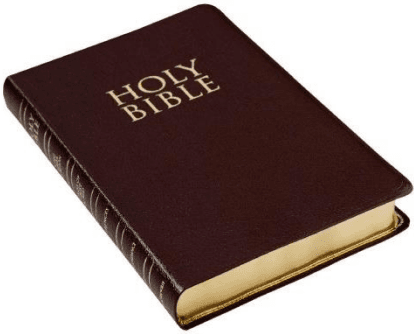The Old Testament Canon
A quick comparison of the list of Old Testament books considered canonical1 in the early Church and those considered canonical in modern Protestant churches will reveal some discrepancy. This has led some people to speak of “the Palestinian canon” (a shorter list of books considered canonical by the Jews of Palestine) and also “the Alexandrian canon” (a longer list of books considered canonical by the Jews of Alexandria), and to further assert that the early Christian Church opted for the longer Alexandrian canon. This handy shorthand, however, obscures some of the historical complexities of the question. One early list of authoritatively canonical Old Testament books was reported by Eusebius of Caesarea, in his Church History. He reports that Origen wrote: “There are twenty-two canonical books according to the Hebrew tradition, the same as the number of letters in their alphabet.”2
Over the course the 4th and 5th centuries, theologians and pastors such as St. Athanasius, St. Epiphanius, St. Gregory Nazianzus, St. Hilary of Poitiers, St. Jerome, and St. Augustine detailed their own lists of which books which they believed to be canonical. However, each list contained small variations and generally included between 22 and 24 books. For example, the St. Epiphanius excluded Sirach and the Wisdom of Solomon, but St. Gregory Nazianzus excluded those two plus Esther, Tobit, Judith, and Maccabees. Often books such as Sirach, the Didache, and the Shepherd of Hermas were recommended as useful for the edification of the people but were not considered to be canonical. In addition, various canons of councils, such as Canon 85 of the Apostolic Canons (4th c.), Canon 60 of the Council of Laodicea (4th c.), and the Council of Carthage (5th c.) approved canonical lists that were determined by the bishops in attendance.
(4th c.), Canon 60 of the Council of Laodicea (4th c.), and the Council of Carthage (5th c.) approved canonical lists that were determined by the bishops in attendance.
What are we to make of all this? The main concern of the Church, apparently, was not to produce a comprehensive and authoritative list for its reading members, but to exclude from their literary diet books that were harmful and heretical. Eusebius, for example, had three lists: books clearly canonical, books that were not canonical but still should be read, and books that clearly ought not to be read by the faithful.
In general, therefore, one might sum up the patristic approach to the Old Testament canon by saying that in general they recognized a more limited Hebrew canon, but still wanted to include other books as well. As one scholar said, “The church Fathers did not treat as canonical what they found in the Septuagint; what they treated as canonical came into the Septuagint.”3 The contents of the LXX have always been elusive, but it is likely that the Greek Bible used by the Christians included writings that were a part of this collection from the earliest Christian community, before their separation from Judaism in the first century A.D. “There is no evidence that their OT Scripture collection got bigger with time.”4
In other words, the Church always valued the larger literary corpus of Israel, even when it defined its own canon in terms of the shorter Hebrew canon, and it found a way to include the extra books in its liturgical diet. Presently the canon of the Orthodox Church includes the larger collection, including what is called the Apocrypha.5 In 1950, the Greek Church officially authorized this as its canon, including 2 Ezra (known as 2 Esdras in some English translations) and 3 Maccabees, with 4 Maccabees placed in an appendix. In 1956, the Russian Church authorized the same list but omitted 2 Esdras and 4 Maccabees.6
The issue of canon was therefore obviously not as crucial an issue for them as it later became at the time of the Reformation. The Reformers of the sixteenth century made a point of exalting the Scriptures as the sole authority in the Church (the principle of sola scriptura), and so not unsurprisingly, they needed a complete list of which books constituted scripture. The Fathers of the Church never considered Scripture to be the sole authority in the Church, and so for them the issue of a comprehensive canon was not as important. The issue was not one of inspiration, but fitness for liturgical reading in the liturgical assembly.
Footnotes
-
Canonical means according to ecclesiastical norms determined collectively by the bishops and typically in a council. In this case, the canonical books of the bible are the list of those books the Church considers part of its bible. ↩
-
Eusebius of Caesarea, Church History, 6, 25.1-2. ↩
-
Franz Jozef Stendebach, “The Old Testament Canon in the Catholic Church,” in Siegfried Meurer, ed., The Apocrypha in Ecumenical Perspective, (New York: United Bible Societies, 1991). ↩
-
Lee Martin McDonald, The Biblical Canon, Its Origin, Transmission, and Authority (Peabody: Hendrickson Publishers, 2007) 206 ↩
-
Or, by the Orthodox, the “anaginoskomena”—the books “that may be read” (from the Greek word ἀναγιγνώσκω anagignosko, to read). ↩
-
McDonald, The Biblical Canon, 210. ↩